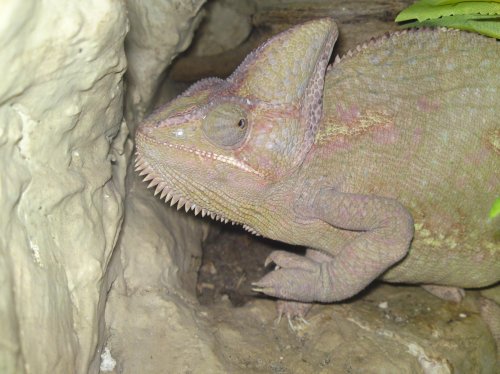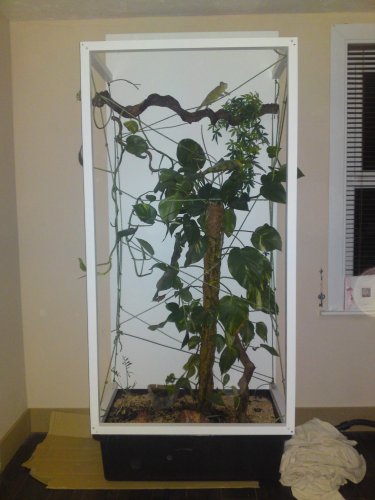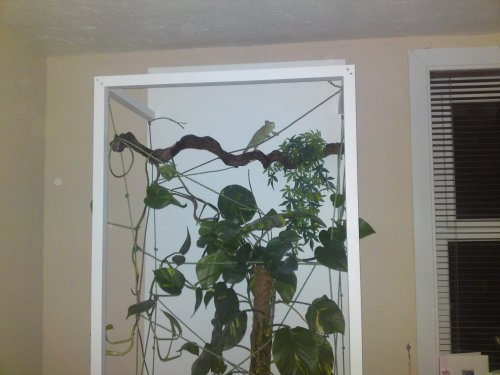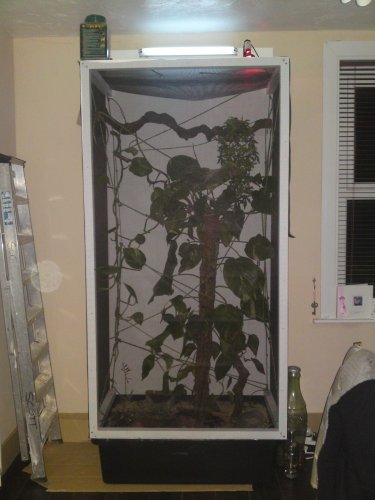scotty1979
New Member
Hello to you all
As this is my first thread on this forum I am hoping that you will go easy on me
I am the proud owner-keeper Yemen Chameleon and I would like to show her to you and also her new home that I am still building.
I am hoping that you will give me your advice in a number of areas: - Lighting, feeding, Hydrating, Plants,
Also I would like to know your views on keeping 2 Chameleons in one home as from research they so do not do it!
But the pet shop I use always keeps multiple chameleons in a large viv with no problems.
Hope you like my set up !
Pic 1 is Cammy
Pic 2 is the old viv 1000mm hight 900mm wide 500mm deep
pic 3 New Viv 2000mm High 1200mm wide and 700mm deep No netting
Pic 4 new viv
Pic 5 New viv with netting and ligths
As this is my first thread on this forum I am hoping that you will go easy on me
I am the proud owner-keeper Yemen Chameleon and I would like to show her to you and also her new home that I am still building.
I am hoping that you will give me your advice in a number of areas: - Lighting, feeding, Hydrating, Plants,
Also I would like to know your views on keeping 2 Chameleons in one home as from research they so do not do it!
But the pet shop I use always keeps multiple chameleons in a large viv with no problems.
Hope you like my set up !
Pic 1 is Cammy
Pic 2 is the old viv 1000mm hight 900mm wide 500mm deep
pic 3 New Viv 2000mm High 1200mm wide and 700mm deep No netting
Pic 4 new viv
Pic 5 New viv with netting and ligths






